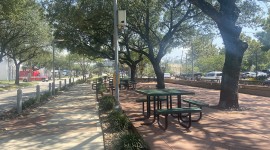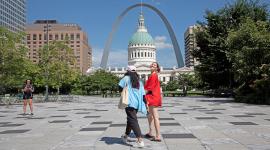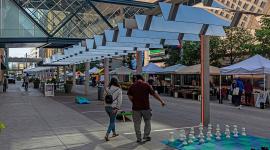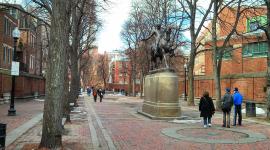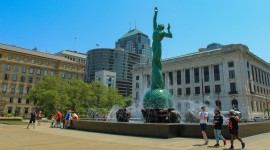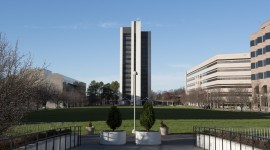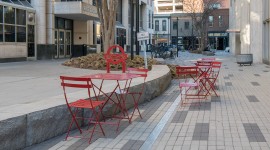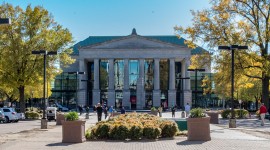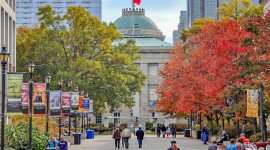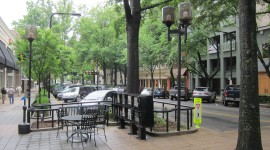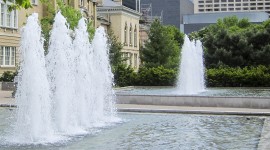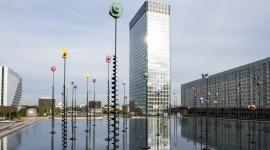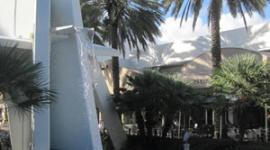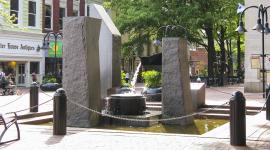Pedestrian Mall
A pedestrian way that replaced a street, generally in the heart of an urban commercial center. The concept emerged during World War II, but was not implemented and popularized in the U.S. until the early 1960s. Heralded as instruments of downtown revitalization to rid shopping districts of congested vehicular traffic and give pedestrians free reign in tranquil, landscaped environments, the mall was often part of a larger program designed to re-route traffic, provide ample off-street parking nearby, and offer efficient service access to stores. While pedestrian malls continue to nurture activity in some college towns and resort communities, in many cases, the long-term effect of these malls proved to be negative, with most examples removed or re-opened to vehicular access.
Design details common to pedestrian malls include public art, fountains, and an urban furnishings palette of ornamental light poles, bollards, benches, kiosks, tree grates and tree guards. Paving, typically unique to the project, often suggests patterns alluding to the prior proportions of the street (placement of curbs, gutters, etc), and is often applied to cross walks. Light poles may also support banners and hanging baskets, while free standing planters and, on occasion, moveable chairs and tables are familiar features. As with plazas, atria, courtyards, and roof gardens, the creation of pedestrian malls has extended the functional landscape into the built environment, significantly enriching the visitor experience.



